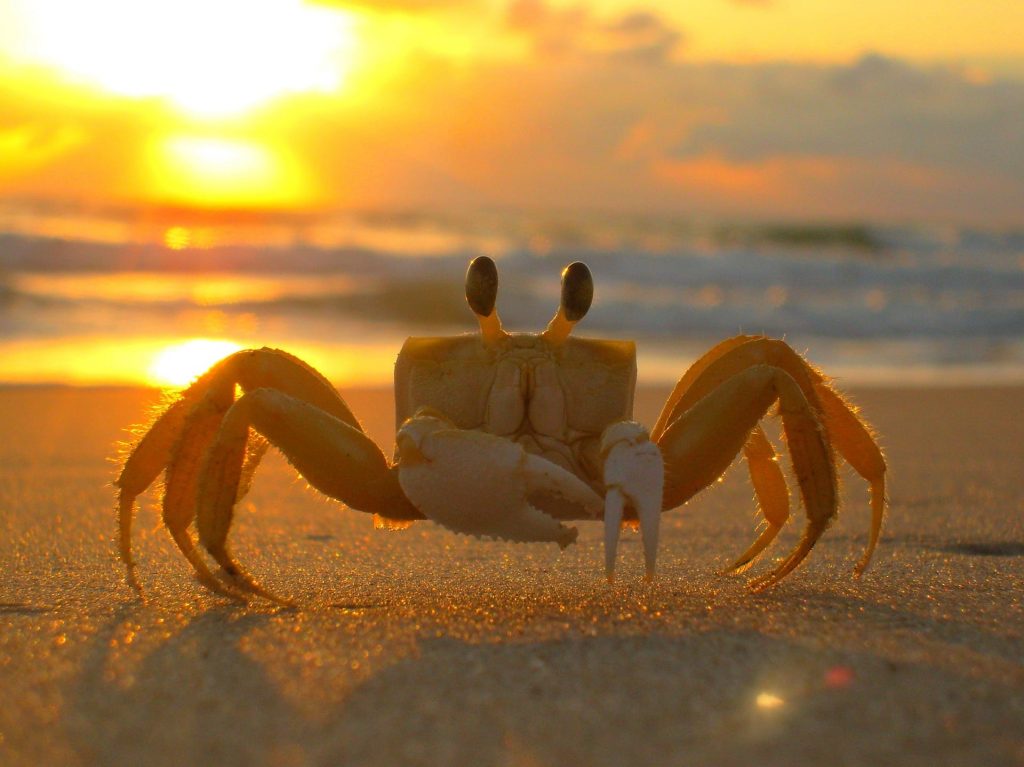Crabs are snippy and sensitive – but we love them all the same! Crabs are sand scuttlers that can be found all over the world – and in many quarters, they are seen as seafood delicacies. Let’s look through some fun facts about crabs that might just impress you ahead of your next trip to the beach.
1. Crabs really do live anywhere they want – pretty much!
Crabs can live in oceans, freshwater and on land – they really are not too fussy!
2. What do you call the crab order?
Crabs belong to the order known as ‘Decapoda’.
3. Crabs are always likely to ‘carry spares’.
Crabs have ten limbs, and so if they lose one in battle or by accident, they can still walk and even run! They are also one of few animals who generally walk sideways!
4. Crabs aren’t often prey!
Few animals prey on crabs, due to their protective shell, and adapt camouflage. They can also move more quickly than some potential predators. Sea anemones and octopus successfully prey on crabs, however!
5. They hide a hidden body part!
Crabs have tails. Unlike lobsters, the tails of crabs are discreetly hidden at their rear end.
6. Crabs lay eggs like crazy!
Females are known to lay between 1,000 and 2,000 eggs at a time. Many succumb to predators or become damaged, where they are deposited or swept away.
7. Crab lifespans really vary.
Small species live for between 3 to 4 years in their habitats. Blue crabs live for up to 8 years, and horseshoe crabs live for 20 to 25 years.
8. However, one species of crab can live for decades and decades.
Giant Japanese Spider crabs can live for an amazing 100 years!
9. It’s also absolutely massive!
Giant Japanese Spider Crabs can reach extensions of up to 12 feet between claws!
10. Crab nerves aren’t complex.
Studies reveal that some crabs have only two main nerve sensors – one at the back, the other at the front!
11. Can crabs tune in?
Crabs have been known to react to sound but do not have ears. It is believed that in their natural habitat, crabs become familiar with some forms of vibration which may be triggered by sounds.
12. Have a heart!
The circulation of blood in a crab is not driven by a heart but is known as an open circulatory system.
13. A blue-blooded critter!
The colour of the blood of some crabs is unique! Horseshoe crabs have blue blood, for example!
14. Chew on this!
Crabs have teeth, but not in their mouths! The teeth of crabs are in their stomachs – this enables them to swallow large pieces of food which are subsequently crushed in the stomach. In some species, the noise from their stomachs repulses potential predators!
15. Crab migration is pretty incredible.
Some species of crabs migrate considerable distances. In winter some crabs have been tracked and found to migrate up to 100 miles. It Is felt that these crabs migrate to find more hospitable waters for food and mating.
FAQs about Crabs
What do crabs eat?
Crabs eat pretty much anything and everything - they swallow up much of what’s smaller than themselves!
Is a crab an insect?
No - it’s a crustacean! However, it’s similar to an insect in that its body is segmented.
Are crabs intelligent?
Yes - massively so! Crabs can remember maze directions for up to a fortnight, and have been recognised in UK law for their intelligence.
Do you know any fun facts about crabs? Share them in the comments below!
